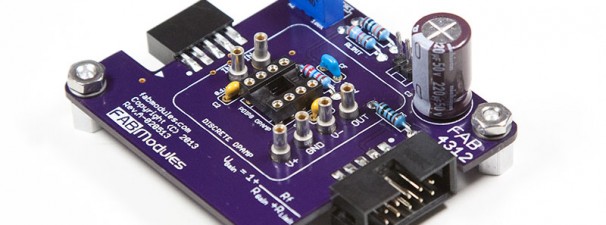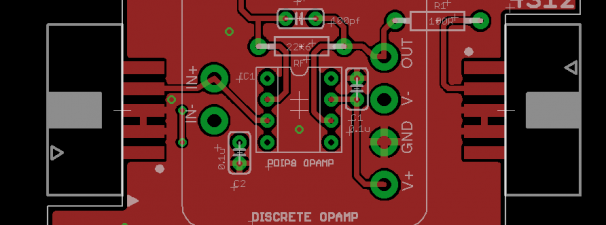This is our FAB4312 Non-Inverting Amplifier Module. You can use any single opamp, 8-pin PDIP package like an LME49710, NE5534 or equivalent. It also features Mill-max sockets if you want to mount a 2520-style discrete opamp, like our DOA-12, DOA-17, 990C, API 2520, or compatible discrete opamp.
A trimmer is also provided to let you adjust DC offset to zero volts (0V). A 2-pin header is provided for connection of your gain control potentiometer (or selector switch, or digital potentiometer, or switched resistor ladder network). In the future, we’ll be providing FAB modules that will offer these different options for controlling the gain of your amplifier.



